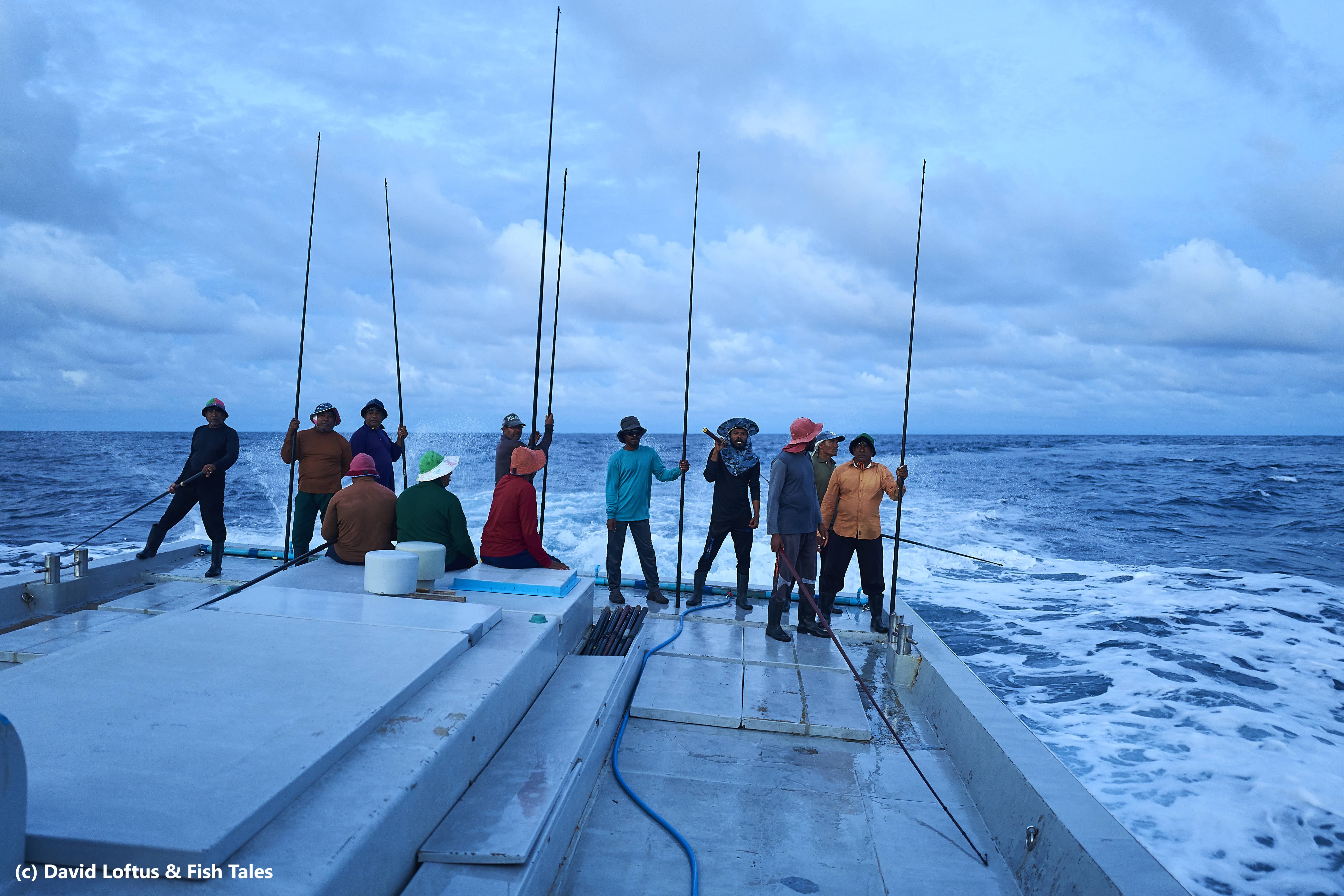
Maandhoo pole-and-line skipjack tuna

Location & History
The Maandhoo pole-and-line skipjack tuna fishery is located in the south centre of the Maldives around the Laamu Atoll and is a subset of the larger, national pole and line fishery. The Laamu Atoll is one of the first regions of economic development in the Maldives, however, this fishery is still the primary source of livelihood for the Maldivian people in this region. The Maandhoo pole-and-line fishery is located in the Arabian Sea within the Indian Ocean.
How is the Tuna Caught?
All the tuna from this fishery is caught using traditional pole-and-line methods, using one hook on a line attached to a bamboo pole, catching one fish at a time. Most fishing vessels employ a crew of about 15-20 fishers, and they catch small, live fish to use as bait for the tuna close to shore. Once the live bait is caught, vessels travel out to the open water searching for schools of tuna using binoculars and relying on sightings of birds and/or dolphins. Flocks of birds hovering above the surface of the ocean are good indicators of feeding schools of fish, and fishers have used these sightings to locate tuna for many years. Once located, the fishers use the live bait fish to keep the tuna swimming around the boat in a frenzy, which helps when landing the fish on their hooks. The boats spray water off the back of the vessel onto the surface of the ocean, to mimic the action of fish being chased by predators, which also helps to attract the tuna. Fishers lower their lines into the water and wait for a tuna to get hooked on the end, before pulling the fish up onto the boat. Non-target species (also known as bycatch) are animals that the fishery doesn’t want to catch, such as dolphins, turtles or sharks. The use of a single hook and line per fisher means that there is very little bycatch, and because fishing takes place at the surface of the ocean, there is virtually no negative impact on different marine habitats. Once the tuna are on board, they are placed on ice immediately and taken into shore where they are either exported frozen, or processed in one of the island factories.
Unique Features
A unique and popular aspect of the fishery is that all the boats are owned by Maldivian families that support fishing communities, so the proceeds from the catch sales supports the livelihood of the outer island communities of the Maldives. Fun Fact: The Maandhoo pole-and-line skipjack tuna fishery has the Horizon Fisheries Fairtrade certification.
Gallery
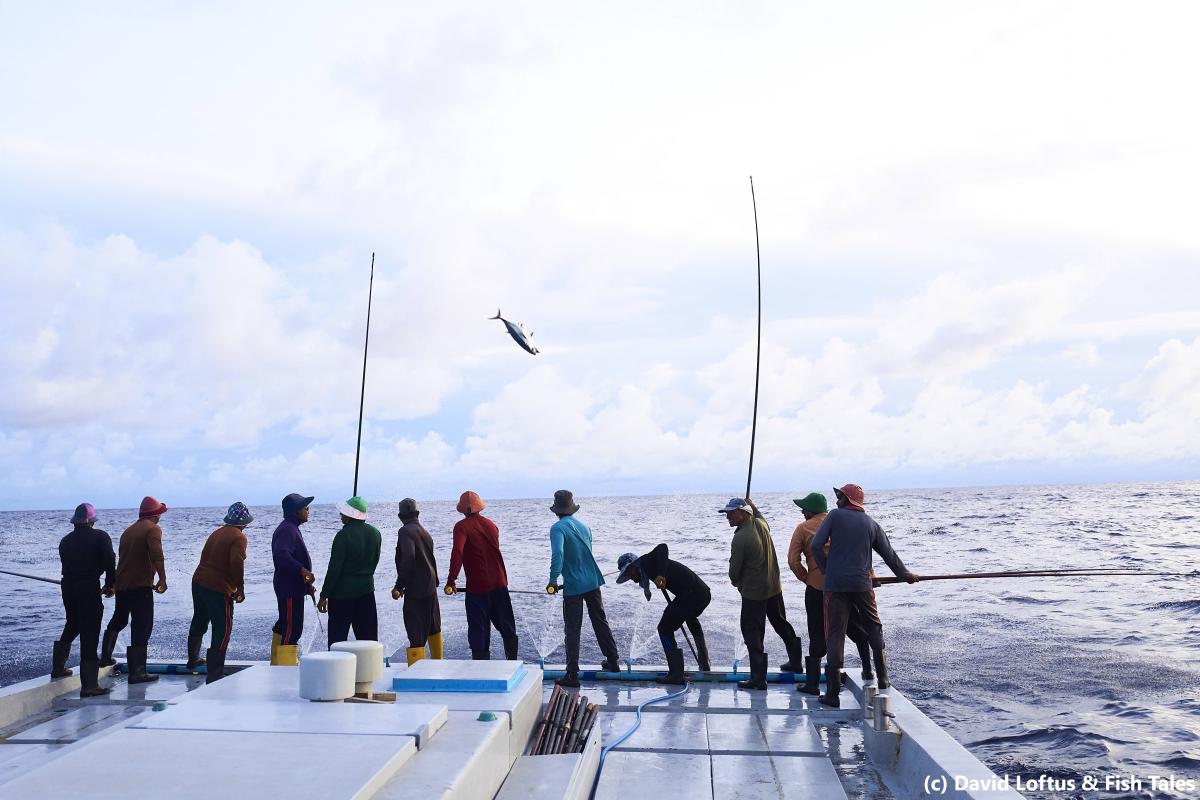
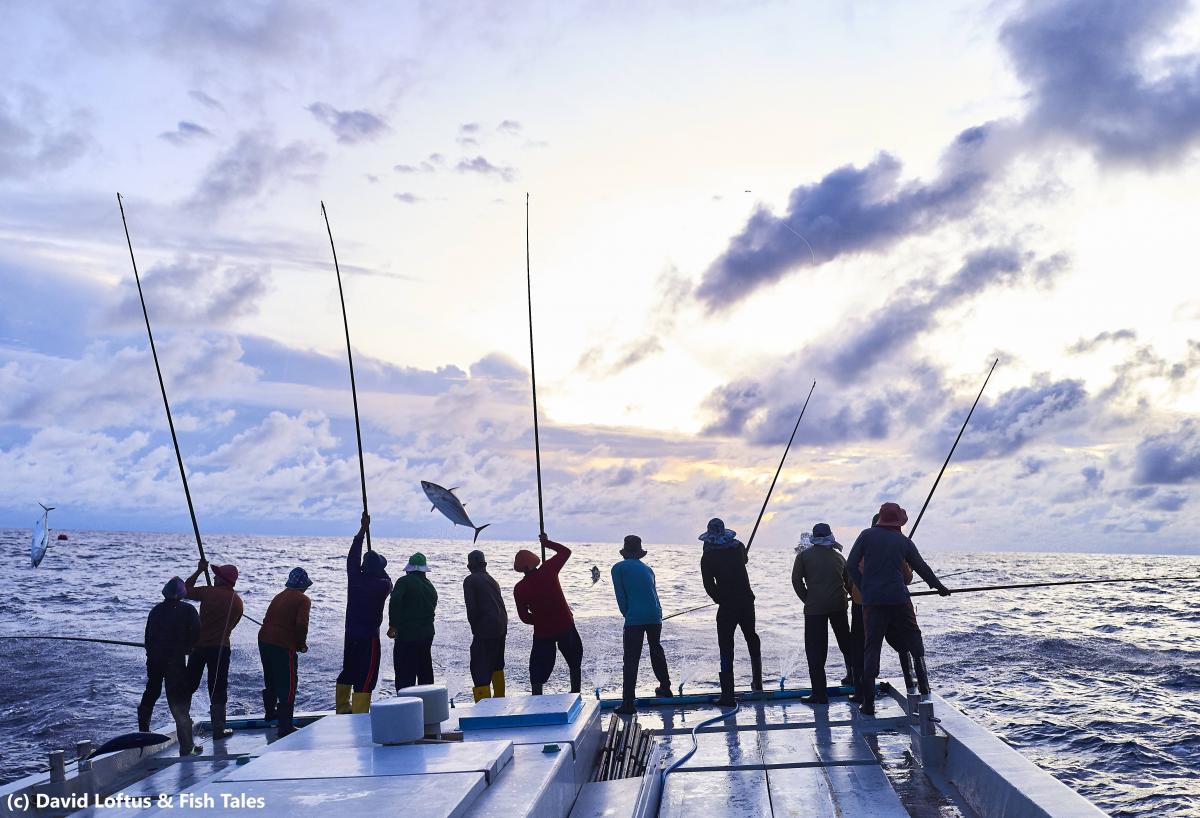
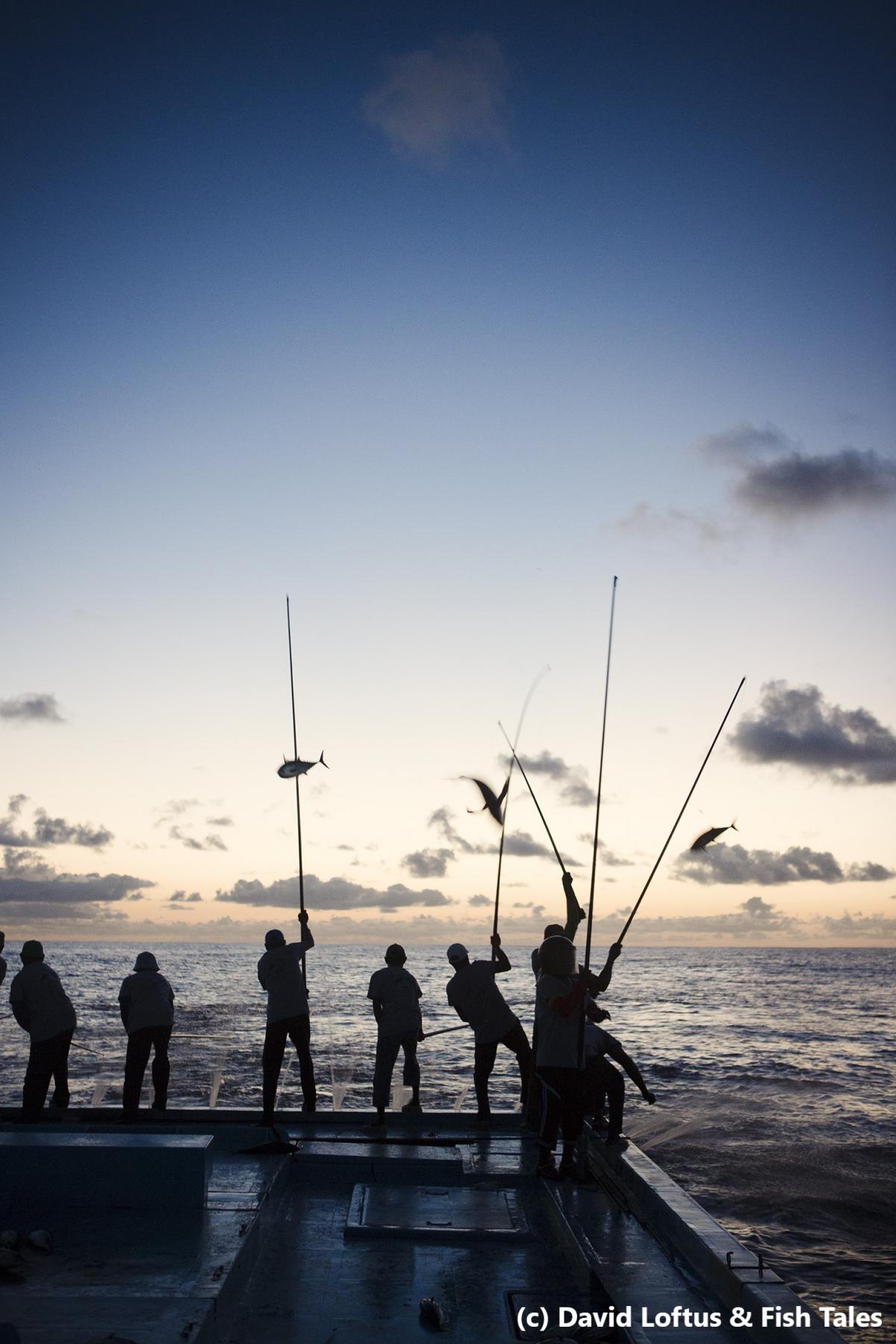
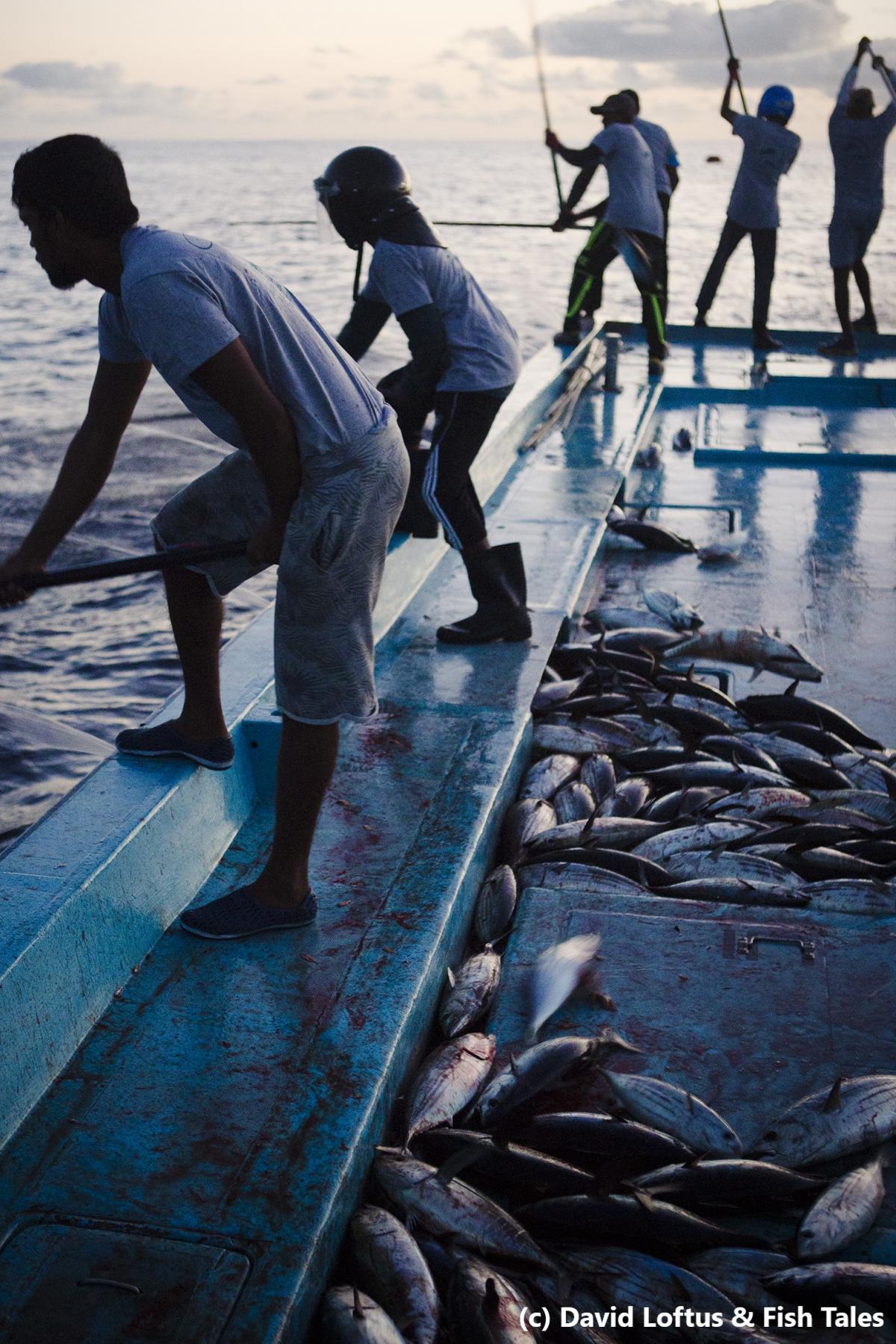
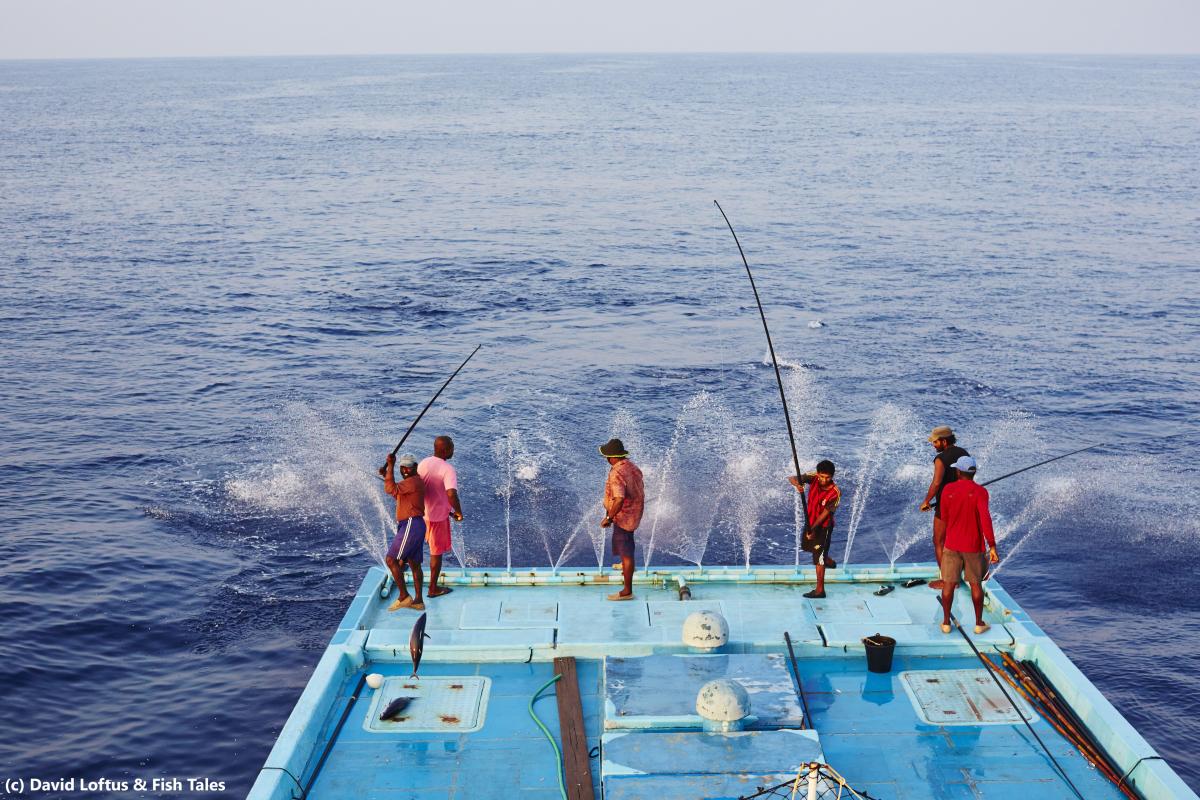
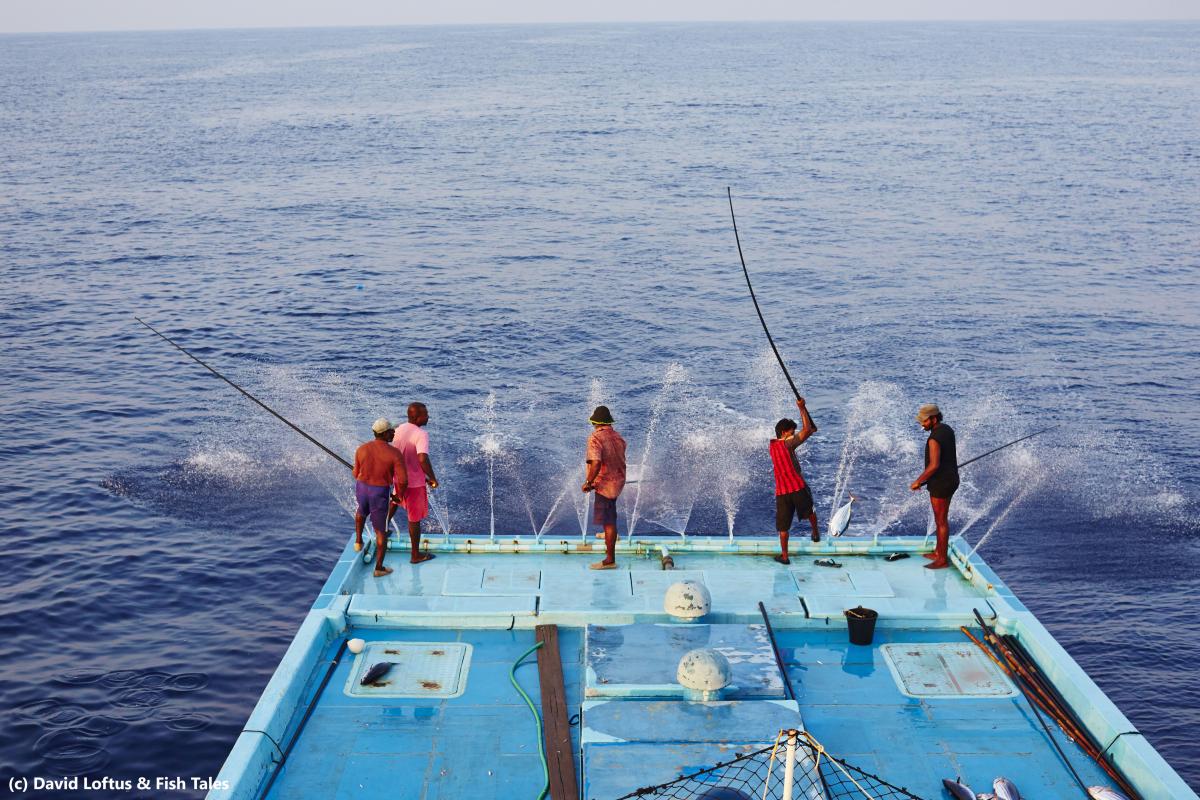
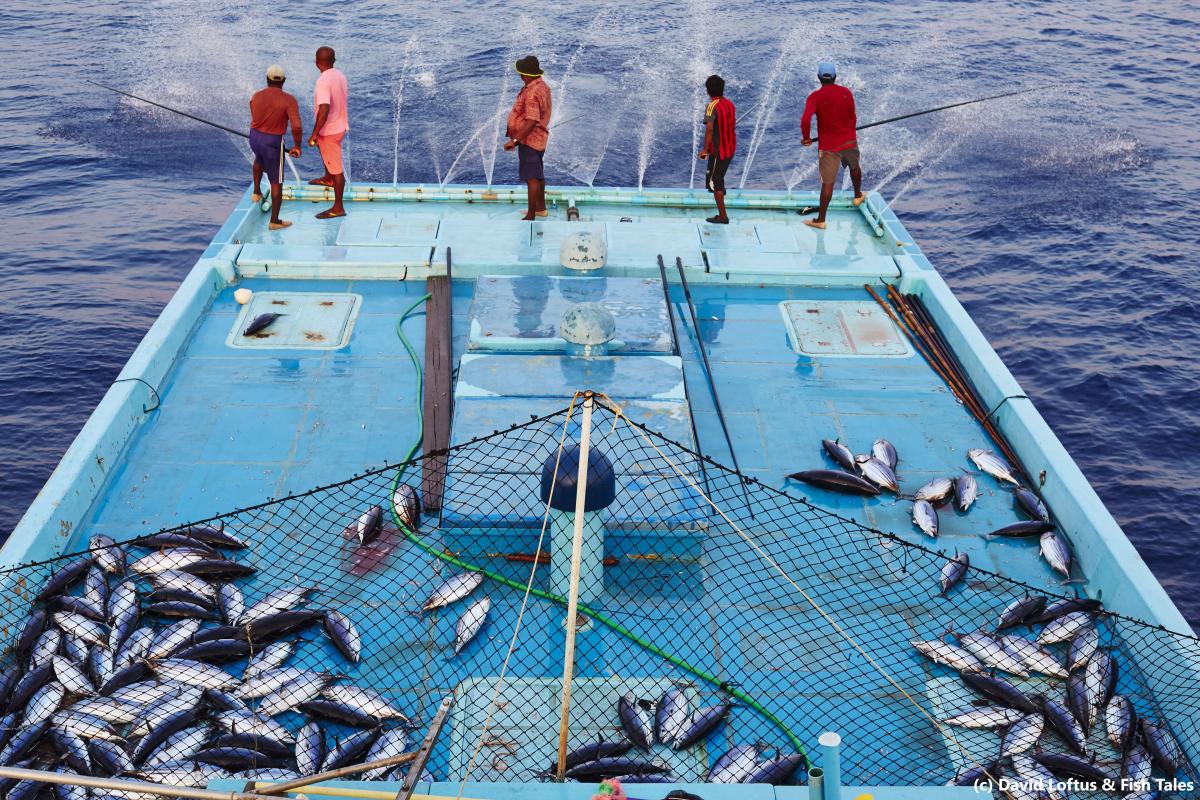
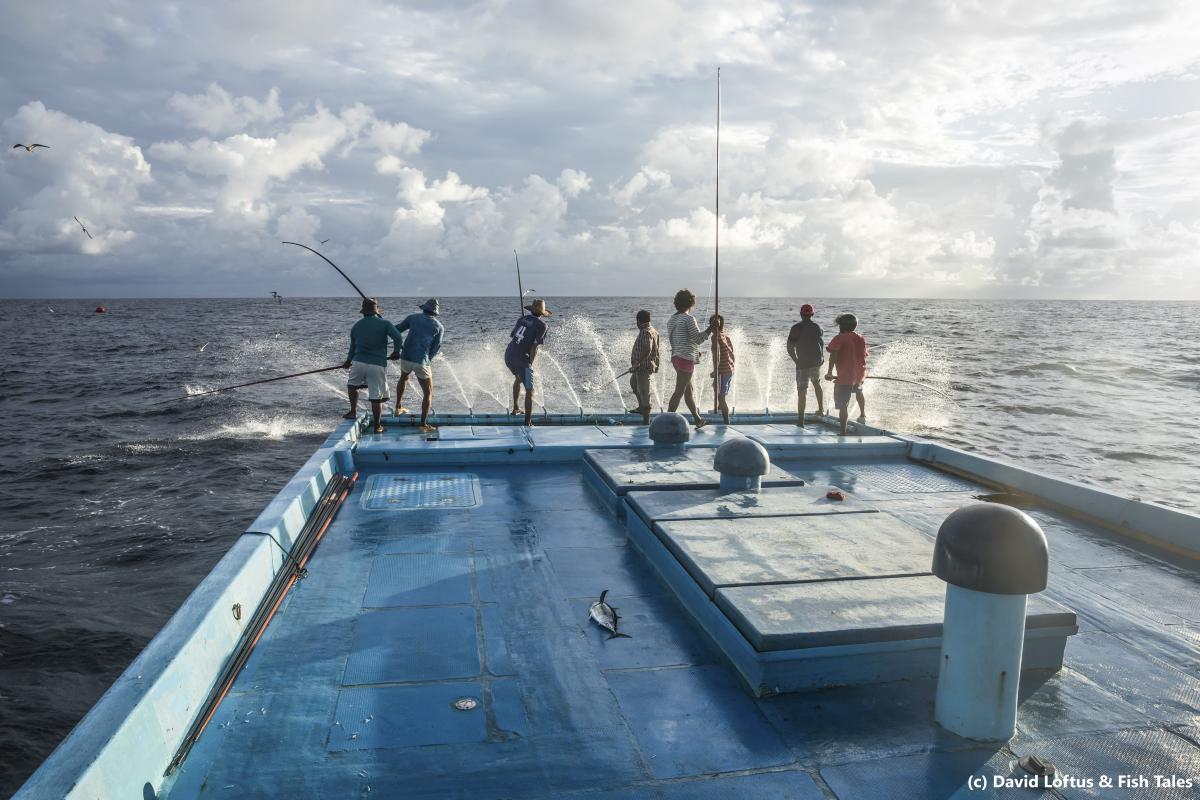
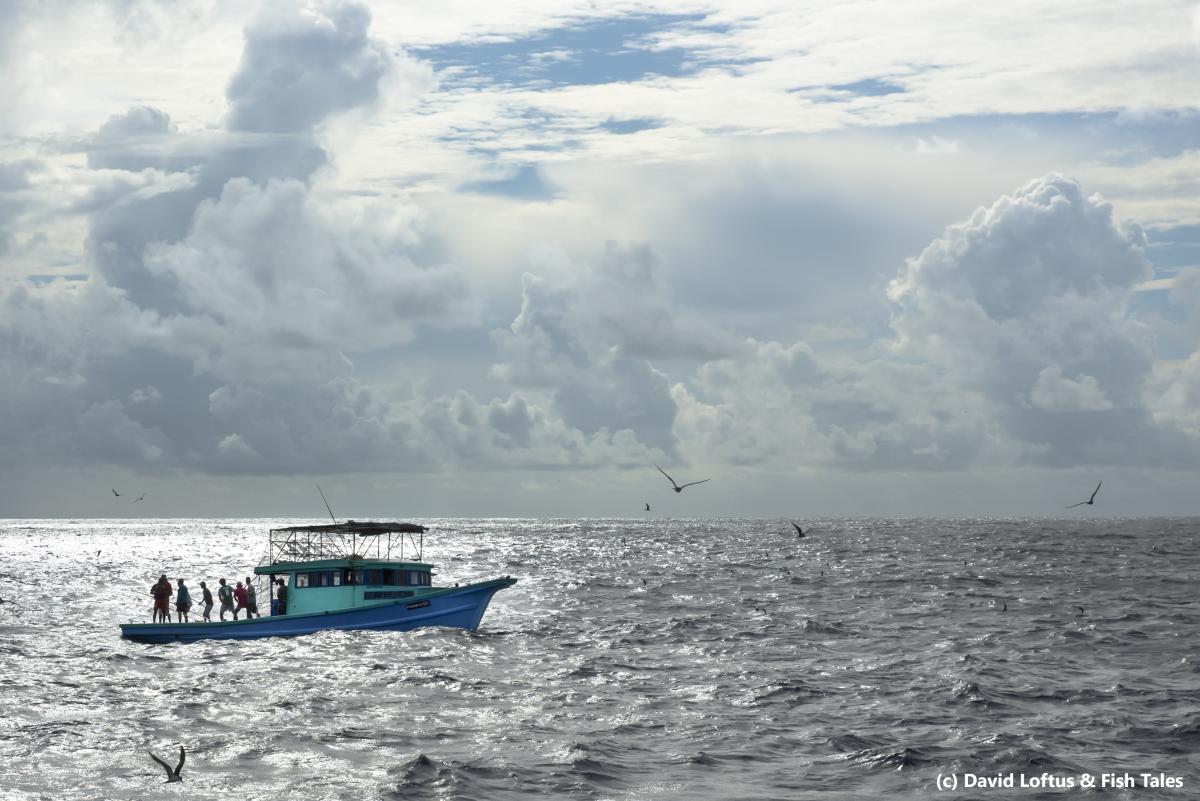
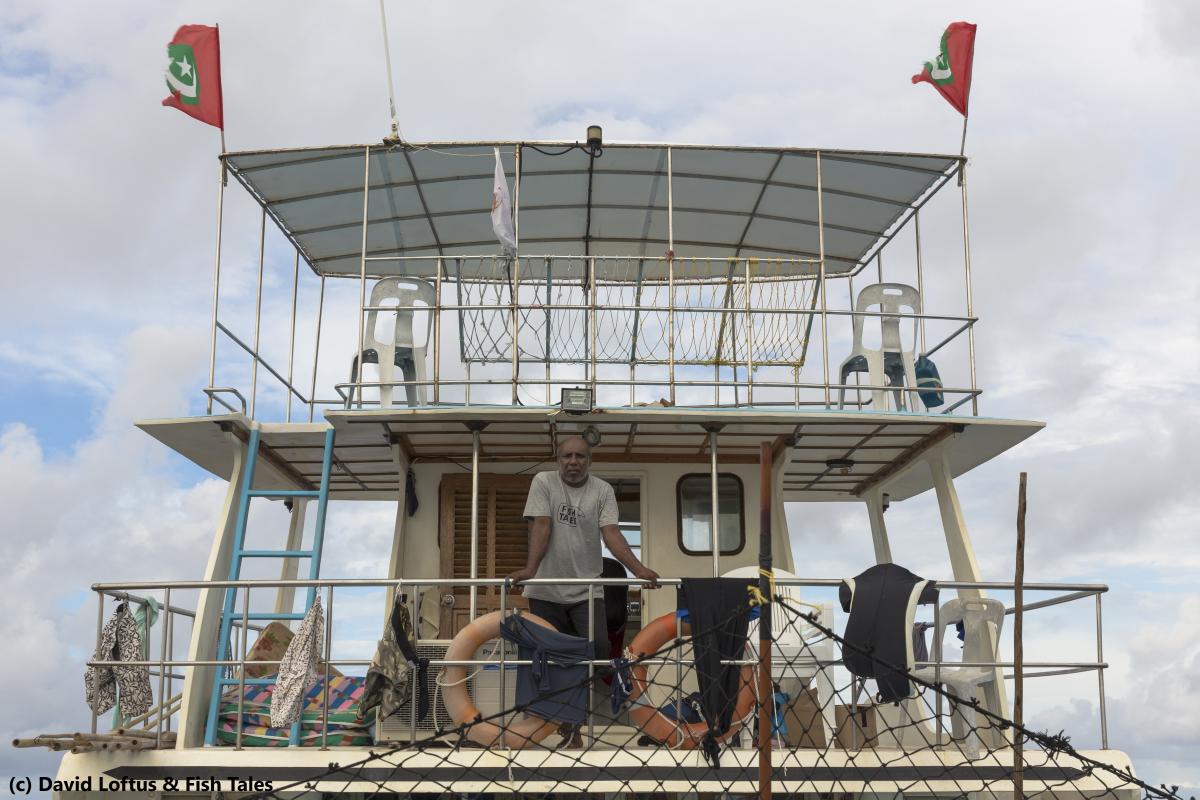
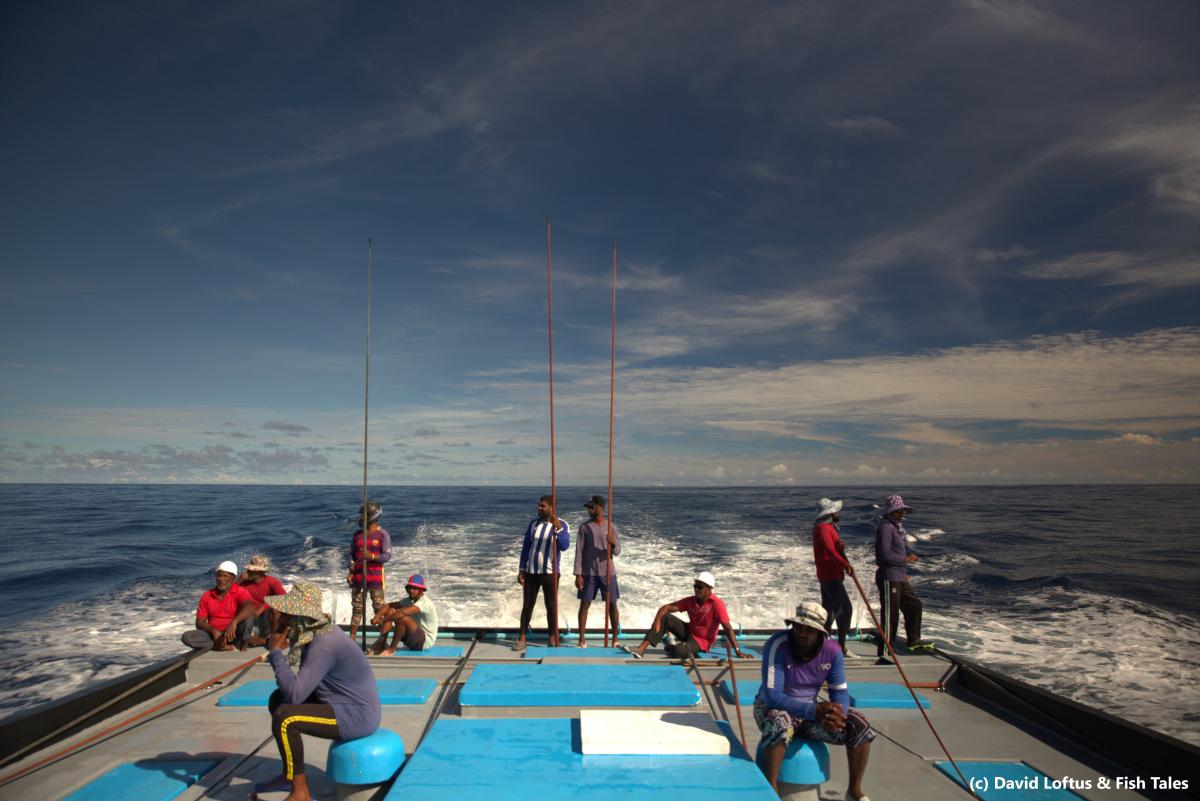
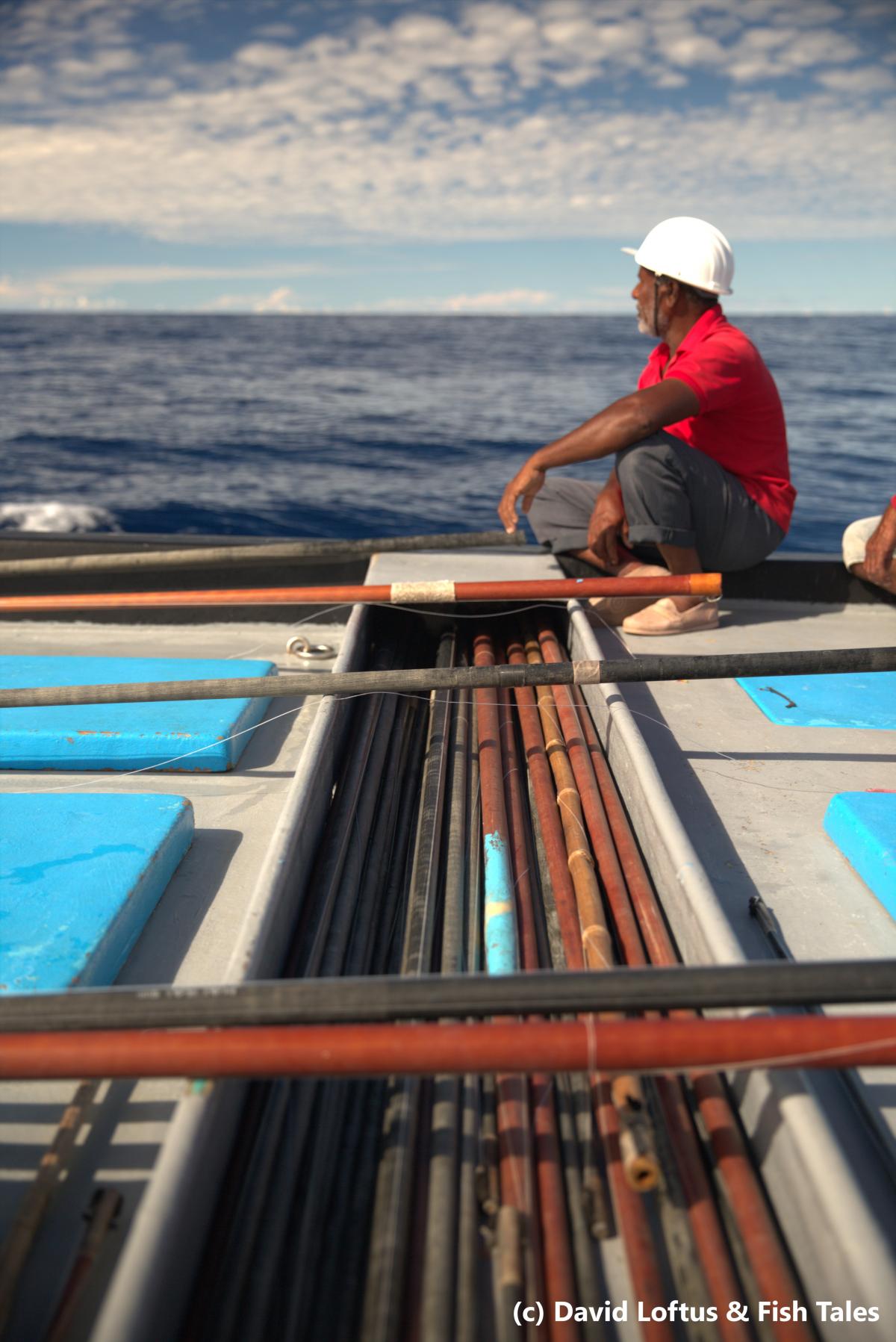

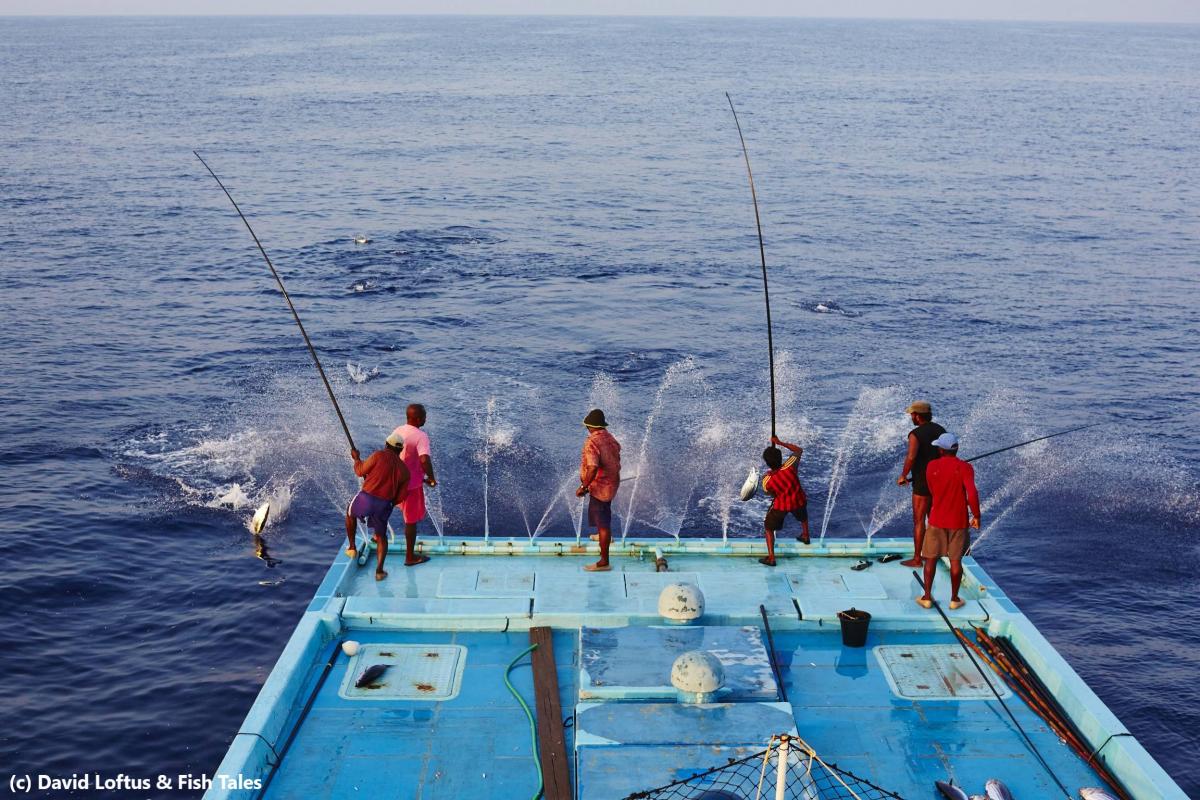
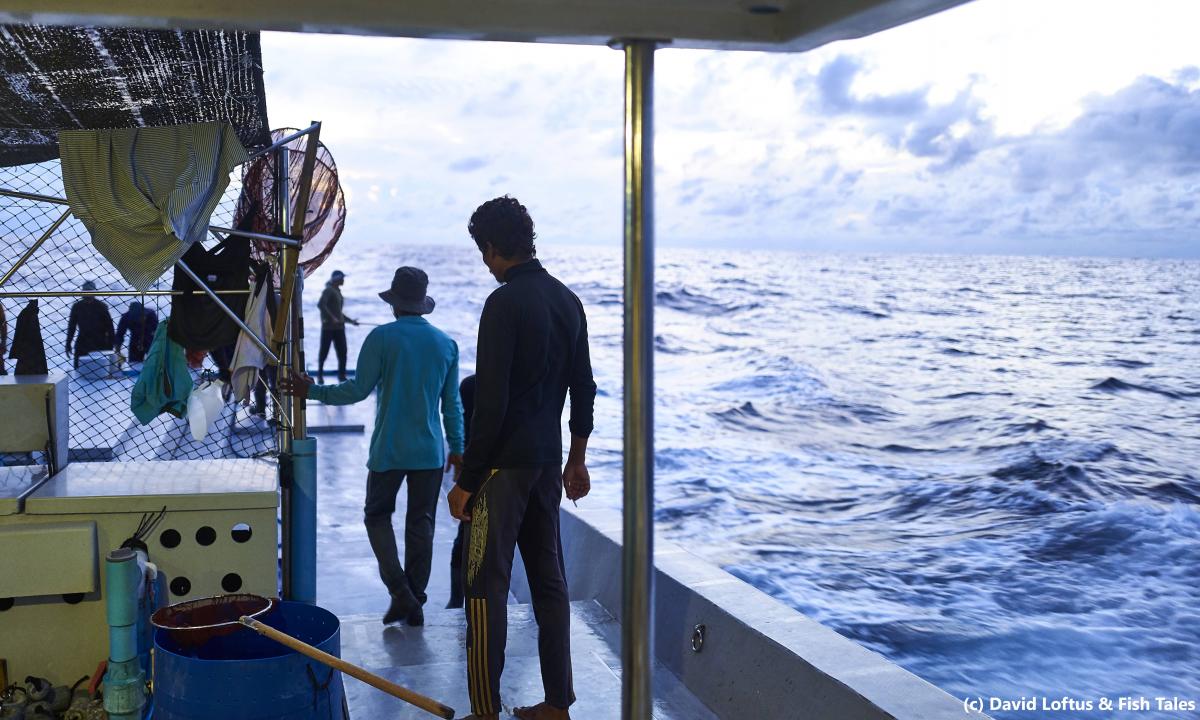

Meet the Fishers
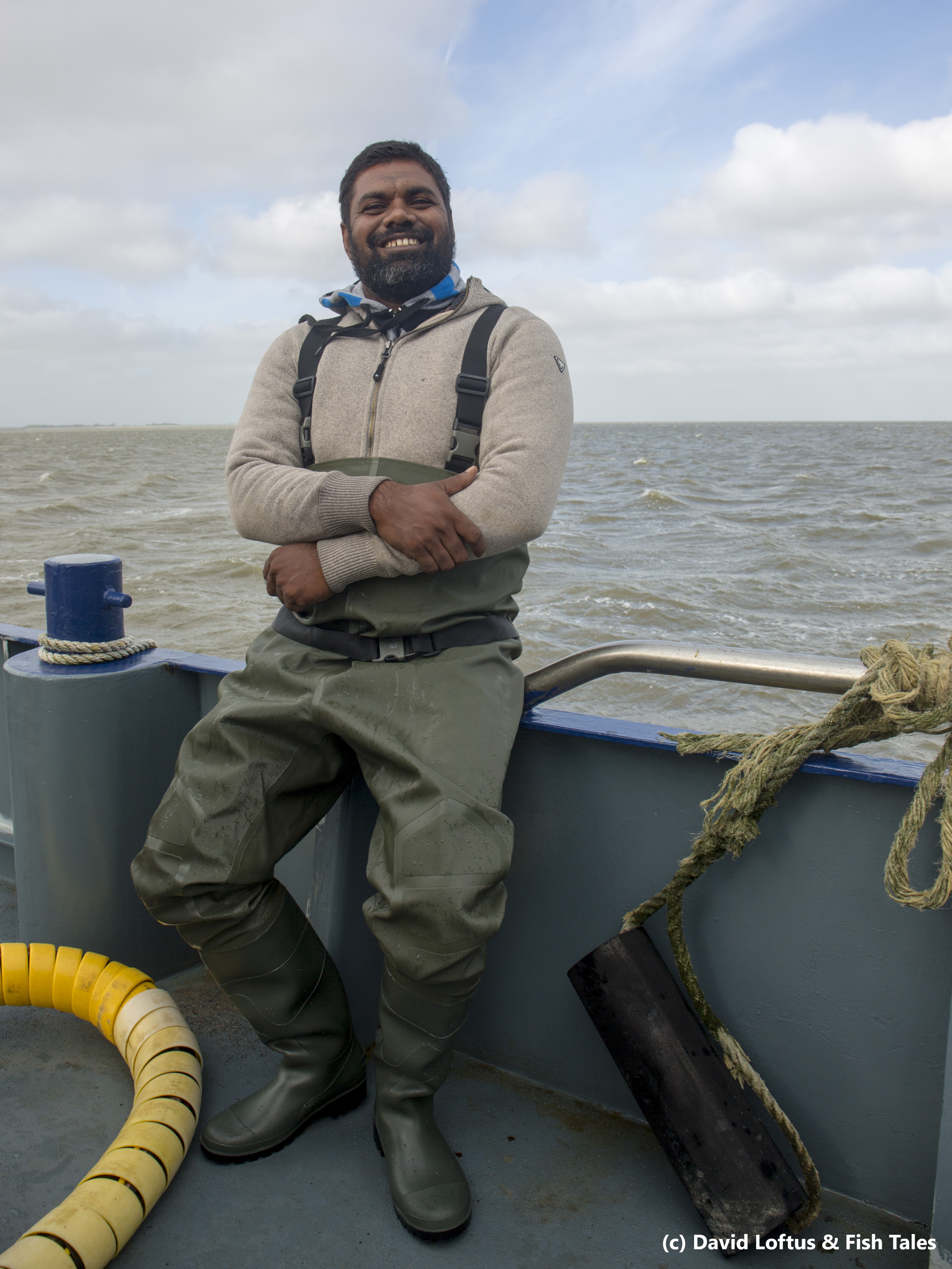
Zaky
‘IF YOU LIVE IN HARMONY WITH NATURE, YOUR CATCH WILL BE ABUNDANT’
For tuna fisherman Zaky, fish is not only a source of income, but also a daily meal. Before the boat ships out, the crew sit together and share dishes of which more than half has been prepared with tuna. Mas-uni, for example, a breakfast with tuna, coconut and lime. Zaky: ‘Add a piece of naan and you’ll have a great start to the day.’

Typical Vessel
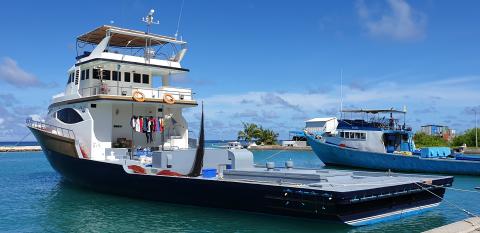
| Item | Value |
|---|---|
| Crew Size | 20 |
| Size Range (m) | <30 |
| Hold Capacity | 22 MT |
| Onboard Cold Storage? | Yes |
Fleet Capacity
-
4500t
- Annual Catch Volume (metric tonnes)
-
34
- Number of Vessels
-
800
- Local Employment
Target Species
Skipjack Tuna
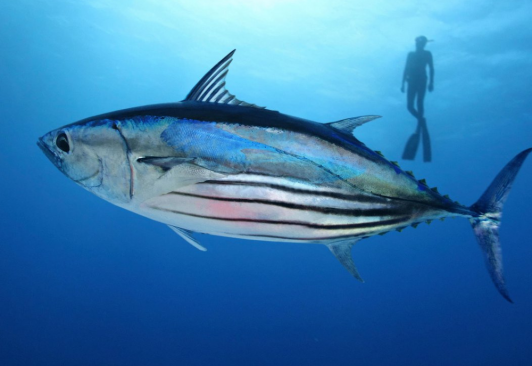
Fishing Gear
Pole-and-line
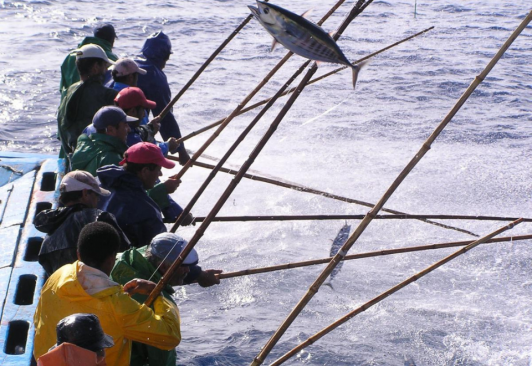
Traceability
Traceability systems are used in food supply chains to track a product from production to consumption. They assist with ensuring that standards and regulations are met throughout the supply chain, which is very important for products that travel across the globe, such as tuna.
Good traceability reduces contamination, disease, and spoilage. In the case of seafood, it also helps to maintain sustainable fish stocks in the oceans so we can keep enjoying tuna for years to come.
Most importantly, traceability provides transparency through the supply chain, allowing all parties including the consumer access to information about the products they are buying.
Fisheries Information System (FIS)
The Fisheries Information System (FIS) was established to maintain fisheries information and to increase the traceability of tuna products from the Maldives. Through the FIS, the Maldivian fishing vessels can apply or renew their fishing license. FIS also has electronic logbook module for fishers to record trip logs and catch. Processors and exporters also record the catch volumes they purchase and prices. With these information the FIS can track catch by vessel that helps to issue catch certificates as part of catch documentation for exports.
Find out moreFishery Association
What is an industry association?
Industry associations are responsible for enforcing industry specific standards and regulations to protect employees and companies within that industry. They have a range of responsibilities such as providing industry specific information to businesses and useful resources, engaging in education programs, and supporting businesses so that they can reach and maintain industry standards.
Another important role of an industry association is lobbying governing bodies to take action on issues that are affecting the industry in question.
What is a fishery association?
Fishery associations are generally not-for-profit organisations that represent fisheries in one area of the world. Fishery associations are important for small-scale and artisanal fisheries, to defend their rights in a competitive industry and lobby governments for their support of these fisheries.
These associations ensure fishers are protected as employees in this industry, and that fish stocks are being managed appropriately to ensure the fishers trade will continue and be prosperous. Some associations represent employees throughout the supply chain, from fishers, to processors, to distributors, protecting the workforce from the source to your plate.
Dhivehi Masverin
Dhivehi Masverin (Maldives Fishermen) was formed in February 2018 as a non-government organisation in the Maldives. The Associations aims to promote pole-and-line fishing together with all the related activities of fishing in the Maldives. The Association intends to create awareness in the community and encourage youths to be a part of the sustainable pole-and-line fishing industry. Dhivehi Masverin also works to update and educate fishermen on the latest technology being used in the fishing industry and provides pole-and-line fishing updates on a daily basis through the official facebook page; Dhivehi Masverin.
The Association adheres to all laws, regulations and best practices used in the pole-and-line fishing industry and assists all the government and non-government stakeholders in the fishing community.
Dhivehi Masverin is committed to promoting sustainable fishing methods to the fishing community and encourages fishermen to exercise environment friendly pole-and-line fishing in the Maldives.
Find out more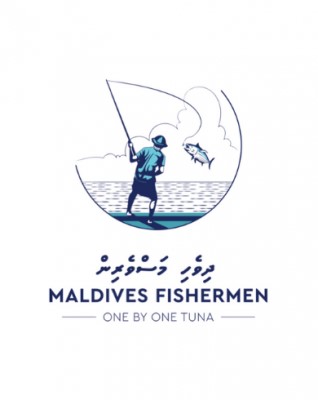

Regional Fisheries Management Organisation
Indian Ocean Tuna Commission (IOTC)
Regional fisheries management organisations (RFMOs) are international bodies formed to manage fish stocks in an oceanic area. They include several countries with fisheries operating in that area, and some focus on particular species such as tunas. They are established through international agreements and treaties. RFMOs typically collect fishery statistics, assess fish stock conditions, monitor fishery activity and make fishery management decisions.
The Indian Ocean Tuna Commission (IOTC) is the RFMO responsible for managing tuna and tuna-like species (including billfishes and some sharks) in the Indian Ocean. Their main objective is to manage fish stocks, by ensuring fisheries operate sustainably, so benefits from relevant fisheries in the region can be maintained into the future.
Stock Status Reports
Skipjack Stock Status
2022-04-01The stock status of a fish species signifies whether a species is 'overexploited', 'fully exploited' or 'underexploited'. Different organisations use different parameters to assign these labels. For example, the Food and Agricultural Organisation of the United Nations (FAO) deems any species to have less than 40% of it’s ‘unfished biomass’ to be overexploited. The aim of assigning stock status to a species is to ensure that catches are kept at a level where future catches will not be affected i.e. to maintain a healthy, viable population of fish.
The aim of assigning stock status to a species is to ensure that catches are kept at a level where future catches will not be affected, in other words, to maintain a healthy, viable population of fish.
In addition to biomass, spawning potential, catch trend and size-age composition may be used to determine stock status. These are important factors to consider as some species are more resilient than others and have different ecological features. For example, skipjack tuna represent the healthiest tuna stocks globally, and reaching maturity at just 1 year of age they have a high reproductive rate. However, they often aggregate with juvenile yellowfin tuna which are important to avoid as juveniles will not yet have had a chance to breed.
National Reports
Maldives
2022-01-01National Reports are formal documents from members of the Tuna Regional Fisheries Management Organisation (tRFMO) in question. Each country that falls within the tRFMO must report on the state of their national fisheries in relation to the requirements of that tRFMO. They are normally presented to the annual Scientific Committee meetings by a credentialed head of delegation - considered national scientists. The tRFMO normally prescribes what the report should entail and how it should be structured, which would also include progress on key resolutions on conservation and management measures, and brief the ongoing scientific research of interest to the tRFMO.
